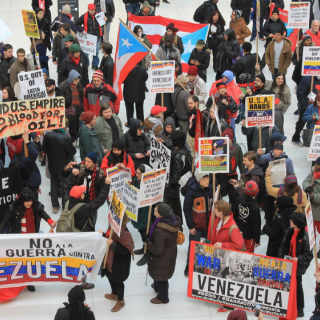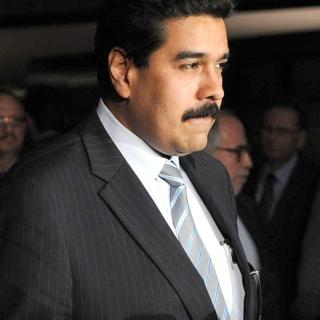Advertisement
Lessons from the City
My major lessons will be news to some and confirmation to others. Like many middle-size to large cities, Columbus claims special status and a unique identity when it actually has remarkably little of either.
Consider three powerful indicators. First, the 220-year-old state capital and home to one of the nation’s mega-universities, but without major league baseball, football, or basketball, has no accepted, well-founded, or documented identity. Columbus has far fewer serious, documented, scholarly or journalistic books and articles than any other U.S. city of its size or quest for recognition. The annual Arnold body-building display and OSU football do not constitute a firm foundation.
Second, major public and private institutions, including its universities and media, join in responsibility for this sometimes crippling absence. The history and social science departments of Ohio State University over many years disdained local studies. Unlike most other major urban universities, no traditions were established. Columbus Dispatch prints trivial “history” by an amateur historian and its former librarian on weekends. It celebrates the insignificant, sometimes the fallacious. WOSU barely scratches any surface with “Columbus on the Record” and “Curious C’bus.” There is no serious city or state history or even natural history museum. Few in the city even note these absences.
Third, past and present, Columbus’ unique identity lies in its undemocratic, elitist structures of city government and their persisting failure to promote any vision of itself as an urban place, a city as whole, a clear conception of the separation of public interest from private interest, and the promotion of the public over the private. Kevin Cox’s Boomtown Columbus (2021) demonstrates this well and suggests how it plays out over time in city government and its “public” commitment to the advancement of the private.
The direct and indirect influence of developers, large corporations, landlords, and merchant groups is without comparison in other cities. Follow the paths in and out of City Council and city and Franklin County major offices. It is not accidental that former mayor Michael Coleman immediately shifted to greater influence as the head of the “nonprofit” lobbyist Columbus Downtown Development Corporation, advancing private development that does not benefit the larger community. Overlapping and reinforcing are the nonprofit boosters advancing the for-profit development of the so-called Columbus Way. They include the Columbus Partnership, Columbus Foundation, Columbus Metropolitan Club, and Campus Partners for Urban Community Development and other arms of the octopus-like Ohio State University that constructs a wall around its campus. City Council and a wide range of its departments support private efforts in ways too numerous to count.
The City Council legislative aide helped me to understand how Columbus city government uniquely combines democratic failure with disconnection and broken communications. City government strikingly resembles an unreformed American city of the mid-19th century. It unapologetically lacks representative government. Unlike comparable cities, all Council members are elected at large. A thin, cosmetic Band-Aid of making each representative responsible for communications in a poorly designed district mapping is laughable but offensive to residents. Present Councilors who equate this move to “more democratic” demonstrate their ignorance.
Inseparable from democratic failure is the City’s and its agencies uncritical commitment to boosterism and private profits regardless of costs to the human and physical environment. This is a consistent thread that ties together disparate elements of the city’s past and present. Recent Democratic Party dominance—lauded by incumbents and recent predecessors, condemned by others—is a blurred smokescreen for unreformed, undemocratic foundations. For better and for worse, this semi-conscious, unacknowledged ideology isn’t even justified by one form or another of “trickle-down economics.” That is far too sophisticated for Columbus.
Analogously, meeting notices never include agendas or background. Calls for testimony or comment provide no information or organization. They are symbolic charade, a political mascarade. Council barely functions amid a maze of largely undefined and overlapping, even redundant committees. There is neither place for expertise nor a fusion of interests into a functional operation, let alone a vision or visions of the city as a whole. Announcements of pseudo “open” or “discussion” meetings with no agenda or organization arrive in some of our inboxes like spam. Summaries never appear. As a homeowning, taxpaying, voting citizen who is neither a campaign contributor, developer, nor corporation, I cannot speak to a Councilor, only to those unelected aides who care to respond to my communications.
Each Council member touts special projects costing tens of thousands to millions of dollars, too often without developed programs, budgets, or timetables. I cannot discern their connections or degree of success or failure. Often with no stated explanation, Councilors routinely reject public initiative proposals and legitimate petitions that meet all stated legal requirements. City Council meetings are no longer filmed and aired showing citizens’ requests or questions. This further isolates and obscures queries, proposals, and petitions from individuals and neighborhoods.
Yet, few city services function satisfactorily. Neither the mayor nor City Council acknowledges this. The lack of reliable city services ranges from 311 complaint reporting to zoning inspection and enforcement, trash, parking, police, and basic communications. 311 and Zoning are dramatically understaffed. The Departments of Neighborhoods, Public Service, and Public Safety do not serve neighborhoods, the public, or safety. Nor do they follow procedures that involve the citizenry. To the contrary, developers and their recommended, often unqualified consultants inadequately substitute for qualified urban planners and relevant expertise.
Instead of rebuilding the shell of a city-wide 311 system, the City promotes a new, more colorful website that does not function properly. Those responsible for collecting ordinary trash and recycling had not spoken to each other until last fall, when I stimulated a review of public and OSU failures in the University District following my urgent appeal to the City Attorney due to the chaos during OSU football weekends. Solid waste and public health—including dead animal and pest inspectors—were also unacquainted. Despite a very large contract, the private trash recycling company Rumpke does not provide consistent service across the city.
The Department of Public Service is devoted to the advancement of the private sector. It approves out-of-state, short-term car rental companies to allow their customers to abandon their vehicles in spaces for which residents pay a fee for permit parking. When challenged about unpublicized permission without due process that usurps the rights of paid permit holders, the Department first responds illogically about residents’ “mobility,” then goes silent. Its leaders do not appear to care about the public who pays city fees and whose taxes fund their salaries.
The mayor rambles on about his commitment to a never-defined “equity” but does not join the national Mayors’ Committee on Racial Equity (MORE). Columbus—public and private—is a buzzword and slogan city
Decades late, the City attempts to revise its antiquated charter and zoning laws. This very confused activity lies between the ironic and the contradictory. First, the City never actively enforced its own laws. A drive through the city starkly reveals this. The decades-long lapse resulted in damages and near destruction of central-city historic neighborhoods by all but automatic granting of variances for developers and corporations.
Second, current revision stems not only from admission by the City that change is decades overdue, but from private, for-profit interests who cannot be bothered with requesting their variances. Collaterally, the unqualified consultants selected to advise the City are the choices of the private interests.
At the same time, City Councilors and other administrators “study” a major increase in their salaries for their part-time jobs, which are reasonably well-compensated. The mayor’s office is exposed lobbying for a substantial increase for “his honor.” There is little recognition of how this looks and plays to the public at a time of urgent, unmet needs throughout the city including police, welfare services, the schools, the physical city and its infrastructure.
The taxpaying “public” is never central to the conception or the operations of the City of Columbus. Is it surprising that at the same moment, the City Attorney advises Council that they must clarify their open meetings bylaws.
Councilors typically move up the ranks, shifting inside and outside closely associated public and private organizations, but seldom from outside or alternative channels. Although its memberships is more diverse demographically, Council and mayor rule by pro-development, private-leaning consensus among members, each one with his or her favored projects by tacit agreement and no integrating or binding commitment to the city as a whole.
As a proverbial squeaky wheel—retired professor with knowledge, communications, self-confidence, and especially time—I have a voice, within limits, in Columbus today. But that is in itself undemocratic. Almost all other individuals and households lack my advantages.
I have a vote. I use it. And some hear me. I bring people together inside the broken system, and outside it, and sometimes across the divides. But I cannot stimulate meaningful change toward a lawfully responsible City committed to its public rather than private interests. That remains a distant hope in the City of Columbus in 2022.
Further reading
“Columbus’ identity crisis and its media”
“The decline of a once vital neighborhood: Columbus’ University District”
“For Ohio State, bigger is not better”
“Columbus’ University District: Students and the institutions that fail them”
“Notes on current politics in Columbus and Ohio: Thoughts in response to questions from my editor”
“OSU isn’t having a crime crisis; it’s having a leadership crisis”
“‘Update’ to Ohio State isn’t having a crime crisis”
“Columbus city government is undemocratic and disorganized: It’s 2021 and we need a revolution”
“The Ohio State University promotes public health crises”
“Columbus searches for its Downtown with historical, urbanist, and developers’ blinders”
“Columbus, Ohio, searches to be a city: The myth of the Columbus Way”
“The Columbus Dispatch: The decline of a metropolitan daily newspaper”
“OSU falters again, a continuing tragedy”
“Columbus’ major ‘news media’ against democratic politics and the public”
“Ohio State versus ‘campus safety’”
“Columbus isn’t Cowtown or Silicon Valley Heartland; it’s the lawless, wild-wild-Midwest”
--------------------------------------------
Harvey J. Graff is Professor Emeritus of English and History at The Ohio State University and inaugural Ohio Eminent Scholar in Literacy Studies. Author of many books on social history, the history of literacy and education, and interdisciplinarity, he writes about the history and contemporary condition of higher education for Times Higher Education, Inside Higher Education, Academe Blog, Washington Monthly, Publishers Weekly, Against the Current; and newspapers. Searching for Literacy: The Social and Intellectual Origins of Literacy Studies is published by Palgrave Macmillan this summer.



